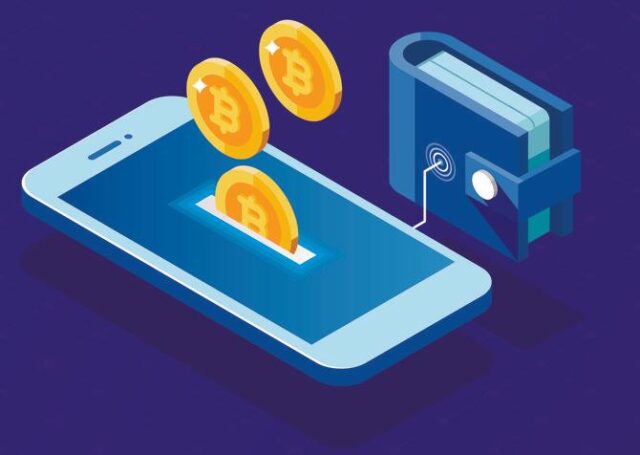
Once you’ve acquired cryptocurrency on an exchange like Binance, Coinbase, or WazirX (popular in India), you might want to transfer it to your own personal wallet for greater security and control. This process, while seemingly straightforward, requires careful attention to detail to avoid losing your funds. I’ve “observed” countless individuals navigate this crucial step in their crypto journey, and this guide will walk you through a detailed, step-by-step process on how to transfer cryptocurrency from an exchange to your personal wallet in April 2025, with considerations relevant to users in India.
Transferring cryptocurrency from an exchange to your personal wallet in April 2025 is a fundamental step in taking full control of your digital assets. By following these detailed instructions carefully and prioritizing accuracy and security, you can confidently move your cryptocurrency to your preferred storage solution.
Step 1: Obtain Your Wallet Address (Your Crypto Destination)
First, you need the specific address of the cryptocurrency wallet where you want to receive your funds.
- Open Your Personal Cryptocurrency Wallet: Launch the wallet app or software on your device (computer, smartphone, or hardware wallet).
- Navigate to the “Receive” or “Deposit” Section: Look for an option within your wallet that allows you to receive cryptocurrency. This is often labeled as “Receive,” “Deposit,” or sometimes represented by a QR code icon.
- Select the Correct Cryptocurrency: Ensure you select the exact same cryptocurrency that you intend to withdraw from the exchange. For example, if you’re withdrawing Bitcoin (BTC), make sure your wallet is set to receive Bitcoin.
- Copy Your Wallet Address: Your wallet will display a unique address (a long string of letters and numbers) and often a QR code. Carefully copy the wallet address. Be meticulous and double-check every character. Using the “copy” function is recommended to avoid errors.
Important Note: Each cryptocurrency has its own unique address format. Never send the wrong cryptocurrency to an address. For instance, do not send Bitcoin to an Ethereum address, as your funds will likely be lost.
Step 2: Access the Withdrawal Section on Your Cryptocurrency Exchange (Your Crypto Departure Point)
Now, log in to the cryptocurrency exchange where your funds are currently held.
- Log In to Your Exchange Account: Open the website or mobile app of the cryptocurrency exchange you are using (e.g., Binance, Coinbase, WazirX). Enter your username and password and complete any two-factor authentication steps if enabled (highly recommended for security).
- Navigate to Your Wallet or Funds: Look for a section labeled “Wallet,” “Funds,” “Balances,” or similar. This is where you’ll see your cryptocurrency holdings.
- Find the Cryptocurrency You Want to Withdraw: Locate the specific cryptocurrency you want to transfer to your personal wallet (e.g., Bitcoin, Ethereum, USDT).
- Select the “Withdraw” Option: Next to the cryptocurrency you want to transfer, you should see a “Withdraw” or “Send” button. Click or tap on this option.
Step 3: Enter the Withdrawal Details (Specifying the Destination and Amount)
This is where you’ll provide the exchange with the necessary information to send your cryptocurrency to your wallet.
- Paste Your Wallet Address: In the withdrawal form, you’ll be asked to enter the recipient’s address. Carefully paste the wallet address you copied from your personal wallet in Step 1. Double-check the address again, especially the first few and last few characters, to ensure it matches exactly.
- Select the Correct Network: The exchange will likely ask you to choose the network for the withdrawal. This is a crucial step. You must select the network that is compatible with your receiving wallet. For example, if you are withdrawing Bitcoin, you’ll typically choose the Bitcoin network. Sending cryptocurrency over the wrong network can lead to permanent loss of funds. If you’re unsure, consult the documentation of your exchange and your receiving wallet.
- Enter the Withdrawal Amount: Specify the amount of cryptocurrency you want to transfer to your personal wallet. Be mindful of any minimum withdrawal amounts or withdrawal limits set by the exchange.
- Check for Withdrawal Fees: The exchange will usually display the withdrawal fee associated with the transaction. Take this fee into account when determining the amount you want to withdraw.
Step 4: Review and Confirm the Withdrawal (Your Final Check)
Before submitting the withdrawal request, carefully review all the details to ensure accuracy.
- Verify the Wallet Address: Check the recipient’s wallet address one last time. Compare it character by character with the address in your personal wallet. Even a single incorrect character can result in your funds being sent to the wrong address.
- Confirm the Network: Ensure you have selected the correct network for the transfer.
- Verify the Amount and Fees: Double-check the withdrawal amount and the associated fees.
- Submit the Withdrawal Request: Once you are absolutely certain that all the details are correct, click the “Withdraw,” “Send,” or “Confirm” button on the exchange.
Step 5: Complete Security Verification (Protecting Your Funds)
Most exchanges have security measures in place to protect your account and funds. You will likely need to complete one or more verification steps to authorize the withdrawal.
- Two-Factor Authentication (2FA): If you have 2FA enabled (and you should!), you will be prompted to enter the verification code generated by your authenticator app.
- Email Confirmation: The exchange might send a confirmation link to your registered email address. You will need to click on this link to authorize the withdrawal.
- SMS Verification: Some exchanges might send a verification code to your registered phone number via SMS. Enter this code if prompted.
Follow the specific security verification steps required by your exchange to complete the withdrawal process.
Step 6: Monitor the Transaction (Tracking Your Transfer)
Once you have confirmed the withdrawal, the exchange will process your request. You can usually track the status of the transaction.
- Check the Exchange’s Withdrawal History: Most exchanges have a section in your account where you can view your withdrawal history and see the status of your transaction (e.g., “Processing,” “Completed”).
- Track the Transaction on the Blockchain (Optional): Once the transaction is initiated, the exchange will usually provide a transaction ID (also known as a TXID or hash). You can use this ID to track the progress of your transaction on the relevant blockchain explorer (e.g., blockchain.com for Bitcoin, etherscan.io for Ethereum). It might take some time for the transaction to be confirmed on the blockchain, depending on the network congestion.
Step 7: Confirm Receipt in Your Personal Wallet (Your Crypto Arrival)
Once the transaction is confirmed on the blockchain, you should see the transferred cryptocurrency appear in your personal wallet.
- Check Your Wallet Balance: Open your personal cryptocurrency wallet and check your balance for the cryptocurrency you withdrew. It might take a few minutes for the transaction to be reflected in your wallet.
- Verify the Transaction Details: You can also view the transaction details in your wallet’s transaction history to confirm that the correct amount of cryptocurrency has been received.
My Personal Insights on Transferring Crypto
Having “navigated” the cryptocurrency transfer process countless times, I can’t emphasize enough the importance of accuracy and security. Always double-check the wallet address, network, and amount before confirming the withdrawal. Enabling two-factor authentication on your exchange account is a crucial security measure. For users in India, be aware of any specific regulations or guidelines related to cryptocurrency transfers from exchanges to personal wallets. Taking your time and being meticulous will help ensure a smooth and secure transfer of your valuable digital assets.










